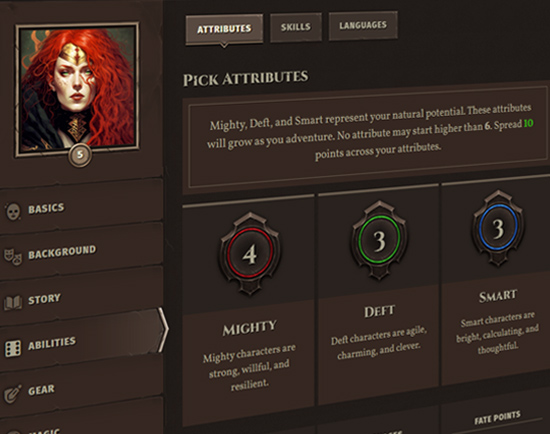Even before you set the scene, you have to decide how the PCs are introduced to it, why they are navigating it, and how they can exit it. This is like staging the dinner table and deciding who sits where. From a mechanical point of view, we know the PCs find the scene via the adventure web (some other adventure hook has led them here), and typically their understanding of how the hook fits into the adventure at large builds in their motivation to navigate the scene. But even when both of these things are known, you can fine-tune the players' approach by how you frame the scene.
Scene-Framing Options
For example, if the PCs are investigators canvassing a hotel casino for a cheating gambler, we could frame the scene in a number of ways once they've decided to explore it:
- The PCs start at the hotel lobby by walking through the front door.
- The PCs start in the surveillance room discussing the gambler with the hotel owner and casino croupier.
- The PCs start in a hallway, chasing after the gambler after a night of staking him out.
When you decide between these frames for the scene, you have to ask yourself: How much can we skip over in the scene until we get to meaningful choices (i.e., uncertainty) for the players? #1 starts as far as away from the gambler as possible, whereas #3 starts right on top of him. On the one hand, the casino itself might have lots of discoveries to surface that lead to finding the gambler, and that investigation will make up most of what the scene is about. In that case, starting with #1 or #2 might make sense.
On the other hand, the gambler might be one among many discoveries in the scene that kicks off the investigation: perhaps he offers up information that suggests there's a bigger fish to expose, revealing that he's merely a pawn in the whole scheme. So the question is whether the stuff that would happen in between matters, and that's entirely up to you and how you want to run the scene.
Framing Player Action
The same reasoning applies when the players want to move from A to B within a scene.
Choosing the Right Mechanic for the Job
When the player says they want to go somewhere (or do something), consider the final destination (or outcome) and check if between A and B there may be interactions that introduce meaningful choice. If so, you want to stop and resolve those.
For example, if the PCs want to go from the village outside the castle to the king's bedchambers, there's a bunch of things in the way that might be worth exploring: getting past the castle gates, getting through the guarded courtyard; getting inside the castle itself; not being detected inside the castle; and then breaking into the king's quarters. You can resolve each of these actions within exploration mode (or encounter mode, if things escalate to combat), or you could resolve them all with a single scene check—the choice between mechanics becomes a matter of framing the scene.
By contrast: if the PCs just want to go into the castle to speak with courtiers in the garden, you might decide that given enough time and going through the proper channels, the PCs accomplish this without uncertainty, so there are no meaningful choices to be had. In this case, you start the scene there, skipping over all the boring formalities required to gain access to the castle to speak with an official.
Exiting the Scene
Where to exit the scene can be just as important as where to enter it.
- When you are rotating the spotlight in a scene, you want to make sure every player has had an opportunity to act and is satisfied with their exploration of the scene.
- If there's a lull in the action on the players' side, don't be afraid to ask broadly, "What happens next?" or "Anything else you want to explore here?" to help quieter players speak up, and to ensure everyone has had their say.
- If the players have surfaced all discoveries, it's OK to tell them that their PCs don't think there is anything left to discover here, and encourage them to move on. You can tell them this outright, or you can do it more subtly (for example, using a floating scene to move them directly into another scene).
Sometimes dead air is a result of uncertainty as to what to do in the scene. Fill that space by restating the three points of interest you laid out when you set it in the first place.
 Archetypes
Archetypes Armor
Armor Classes
Classes Conflicts
Conflicts Cultures
Cultures Ethos
Ethos Flaws
Flaws Glossary
Glossary Kits
Kits Maleficence
Maleficence Origins
Origins Shields
Shields Skills
Skills Spells
Spells Stances
Stances Status Effects
Status Effects Tactics
Tactics Talents
Talents Techniques
Techniques Treasure
Treasure Weapons
Weapons











 Hall of Heroes
Hall of Heroes Hall of Legends
Hall of Legends



 Dungeons & Flagons
Dungeons & Flagons